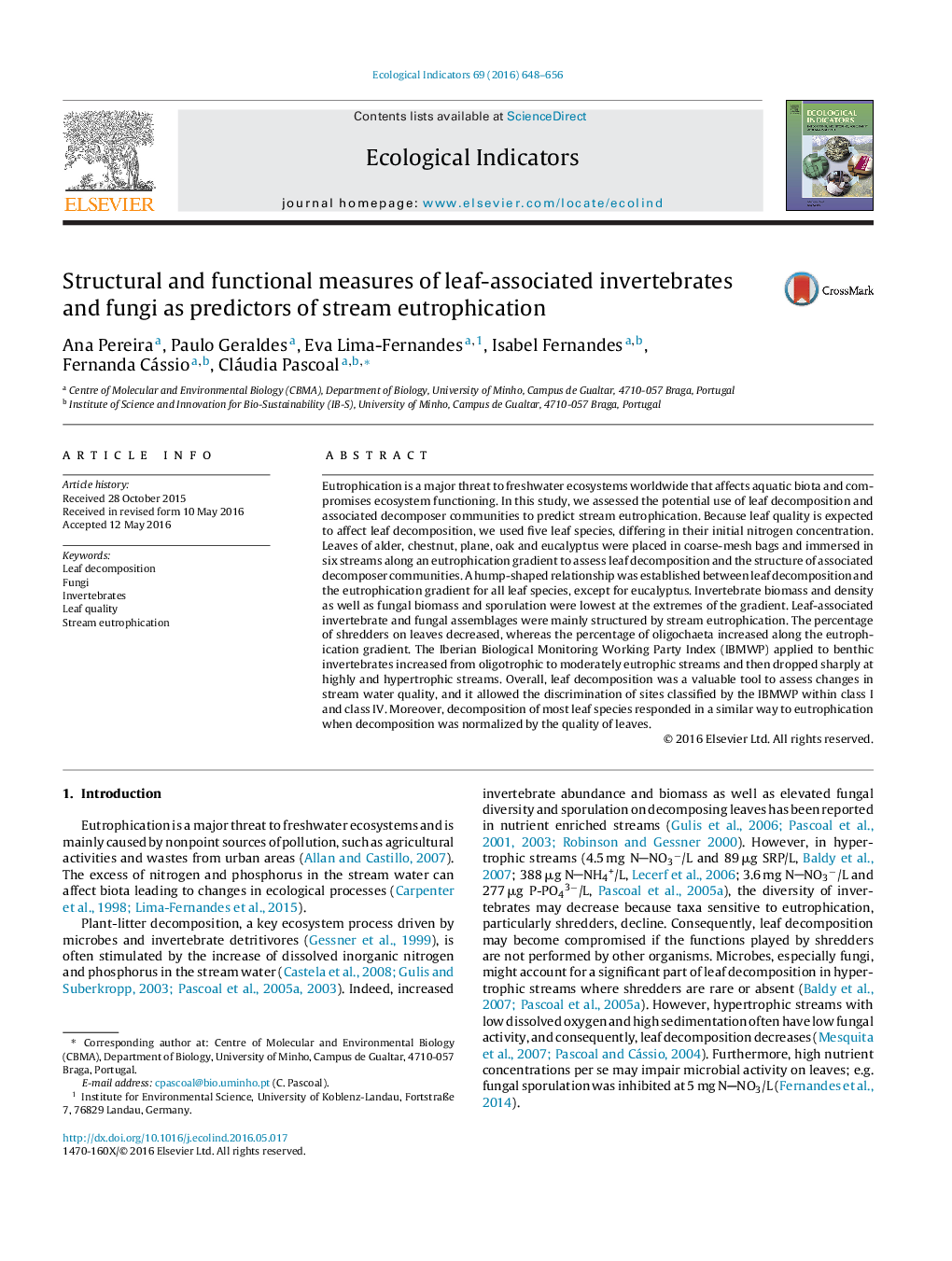| Article ID | Journal | Published Year | Pages | File Type |
|---|---|---|---|---|
| 6293312 | Ecological Indicators | 2016 | 9 Pages |
Abstract
Eutrophication is a major threat to freshwater ecosystems worldwide that affects aquatic biota and compromises ecosystem functioning. In this study, we assessed the potential use of leaf decomposition and associated decomposer communities to predict stream eutrophication. Because leaf quality is expected to affect leaf decomposition, we used five leaf species, differing in their initial nitrogen concentration. Leaves of alder, chestnut, plane, oak and eucalyptus were placed in coarse-mesh bags and immersed in six streams along an eutrophication gradient to assess leaf decomposition and the structure of associated decomposer communities. A hump-shaped relationship was established between leaf decomposition and the eutrophication gradient for all leaf species, except for eucalyptus. Invertebrate biomass and density as well as fungal biomass and sporulation were lowest at the extremes of the gradient. Leaf-associated invertebrate and fungal assemblages were mainly structured by stream eutrophication. The percentage of shredders on leaves decreased, whereas the percentage of oligochaeta increased along the eutrophication gradient. The Iberian Biological Monitoring Working Party Index (IBMWP) applied to benthic invertebrates increased from oligotrophic to moderately eutrophic streams and then dropped sharply at highly and hypertrophic streams. Overall, leaf decomposition was a valuable tool to assess changes in stream water quality, and it allowed the discrimination of sites classified by the IBMWP within class I and class IV. Moreover, decomposition of most leaf species responded in a similar way to eutrophication when decomposition was normalized by the quality of leaves.
Related Topics
Life Sciences
Agricultural and Biological Sciences
Ecology, Evolution, Behavior and Systematics
Authors
Ana Pereira, Paulo Geraldes, Eva Lima-Fernandes, Isabel Fernandes, Fernanda Cássio, Cláudia Pascoal,
